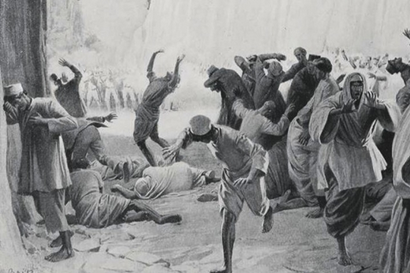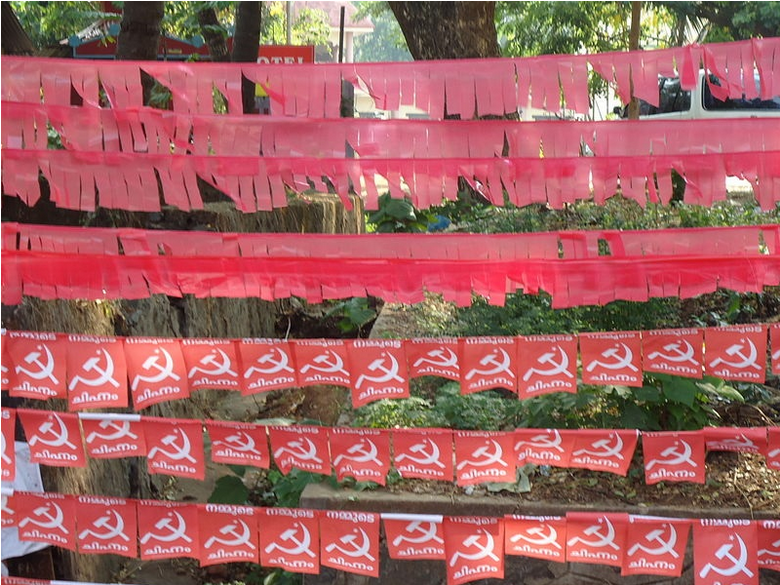In 1965 tensions rose between Pakistan and India around the issue of Kashmir. A provocation by Pakistani dictator Ayub Khan led to open conflict and a victory for the Indian bourgeoisie. In this article, published in October 1965, Ted Grant showed how the war was reactionary on both sides.
Fighting in Kashmir by infiltrators from Pakistan ended in war between India and Pakistan, at least on the West Pakistan frontier between the two countries. Pakistan was deliberately created by British Imperialism at the time that the capitalists were compelled to concede independence. As always, British Imperialism hoped to gain by the policy of “divide and rule” which she has used profitably for centuries. However the steady decline in the strength of British capitalism has undermined the hold which she had on the entire subcontinent of India.
Pakistan split into two halves, separated by the width of India, has continued to be a ramshackle state where the Pakistani landlords and capitalists have been able to maintain their dominance by working on the religious prejudices and fears of the peasants and tribesmen. Pakistan is a Muslim theocratic state, with a large Hindu minority in East Pakistan, the Bengal wing of the State. Created amid communal riots and massacres of millions of Hindus and Muslims, at the time of the partition of India, there has been a mass fleeing of Muslims to Pakistan and of Hindus to India, during the last twenty years, following on communal riots in either country, which have then precipitated similar riots in the other.
India too, because of the domination of the Indian landlords and capitalists has been unable to find a solution to the problems which she inherited from the British Raj. Food production in proportion to population has actually declined. The mass of the population remains illiterate.
India, in population, industry and resources remains the stronger of the two nations. Thus, with aid from Britain and America for the time being she has been enabled to retain a shaky form of democracy.
In Pakistan a military-police Bonapartist, or dictatorial state, has replaced the feeble democracy with which the State began its existence.
Between the two countries, has been the aggravated dispute over Kashmir. A “present” bequeathed by the former rulers. Kashmir has an overwhelming Muslim majority in its population, of millions. With important resources and a strategic position, despite the small population, Kashmir became a key question.
Independence
At the time of partition, Kashmir was one of the artificial princely states maintained by the British. Its Hindu ruler was opposed by the Kashmir Congress, which supported on a non-communal basis the Indian Congress, with the Muslim Sheikh Abdullah, as its ruler. An attempt by the Pakistanis to take over, ended in panic, the ruler acceded to India. The fighting between Indian and Pakistani troops at that time ended in the establishment of a “cease-fire” line, which remained the boundary between Indian and Pakistan held Kashmir, up to the outbreak of the present fighting.
The population of Kashmir gradually became disillusioned with the Indian rulers. Sheikh Abdullah who came into opposition, under the pressure of the population, was deposed and imprisoned. A virtual military regime was established. As with the rest of the subcontinent there was the accumulation of dissatisfaction and opposition. A tendency towards independence from both India and Pakistan began to manifest itself, especially with the release, then reinternment, of Sheikh Abdullah.
Internal pressures
The internal pressures in both countries led the Bonapartist ruler of Pakistan, Ayub Khan to launch on an adventure. Thousands of armed infiltrators from Pakistan were sent into Kashmir. Ayub Khan hoped that this would provoke an uprising. When this failed, the forces sent into Indian-held Kashmir switched to guerilla tactics. This was intended gradually to sap the strength of the Indians, until it would not be worth their while to hold Kashmir.
For the Pakistan landlords and capitalists this was a bad miscalculation. The Indian ruling class, could not retreat on this issue without provoking fatal consequences to their state and themselves. Their army had already suffered a crushing and ignominious defeat at the hands of the Chinese in 1962. Consequently they had to make a stand. Already there had been the clash between the two states over the boundary of the Rann of Kutch which was settled by an indeterminate truce.
The war on both sides had reactionary aims. Waged by the feeble ruling class of both countries, who were dependent for their supplies of planes and tanks on the Imperialist Powers of Britain and America. It is against the interest of the peoples of both countries. They are of common stock speaking in many cases the same languages: Punjabi, Bengali and so on.
The immediate result has been a victory of the Indian ruling class, who have penetrated part of the territory, formerly occupied by the Pakistanis, seized at the time of the last truce. They have also occupied parts of Pakistan, near the city of Lahore and other sectors.
Financial power
In the dirty game of power politics both the Russian and the Chinese bureaucracy vied with each other. At the “United” Nations, paralysed now for a whole period by the struggle between the Russian bloc and that of the western Imperialist camp, the Russians and the Americans joined together and demanded an end of the fighting. This was completely different to the situation over the Congo and other areas, not to speak of the Korean War.
The humour of the Western press lecturing the Indians and Pakistanis as to the futility and senselessness of war, is best illustrated when one turns the pages of the same papers and reads the reports of the brutal war of intervention being waged by American Imperialism in Vietnam.
The dominant power of the industrial giants is illustrated by the threat to cut off all supplies from the warring nations. This was decisive. Pakistan and India had to bow to the superior industrial and financial power of these countries. Even had the war continued they would have been denuded of tanks, planes and the key weapons of war within a period of a few months. Even more important, their economies would grind to a stand-still without the economic “aid“.
Class policy lacking
The British Imperialists have enormous vested interests at stake especially in India. This was the cause of their anxiety. Due to Asian and world developments the position of India and Pakistan was different to their calculations of 1947. Consequently they stood to lose either way, especially with the continuance of the war.
The Russian bureaucracy abandoning all pretence of a class policy, offered to “mediate” between India and Pakistan, i.e. between their rulers. What a comment on the degeneration of the usurpers of the tradition of the October Revolution. To make an analogy, one could hardly visualise I.C.I. and Courtaulds in any dispute they might have getting or accepting the “mediation” of the trade unions! It is just the same for the workers’ state in relation to capitalist states. The Chinese bureaucracy, also playing the game of power politics, lined up with the odious theocratic-dictatorial state against India; on various pretexts threatening war, in order to hold Indian troops on the frontier between them. Thus the “ultimatums” threatening action within a few days, were designed to aid the Pakistanis, who were getting the worst of the military battles.
Fear revolution
In this vile pantomime, we had Russia and China, the two bureaucratic workers’ States lining up and manoeuvring against each other. The consequences of the Chinese game have ended to the disadvantage of China, with the Indians more dependent on Imperialism and both the Indians and Pakistanis looking to the good offices of the Russian bureaucracy.
For America and Russia, this was a secondary question, above all where their interests did not conflict. Consequently their mutually agreed approach. But far from demonstrating the efficacy of the United Nations, it merely demonstrates the super-power of the two giant powers. Both were afraid of revolutionary consequences if the war should continue, with the uprising of both the workers and peasants of Pakistan and of India. Consequently their agreement. They want to preserve the status quo.
The Chinese were interested only in their own narrow nationalist aims. They were not in the least concerned with the effects of their policies on the Indian working class. By alienating the Indian workers and peasants they only strengthened the ruling class.
Real peace
However the stirring up of the workers and peasants, even in the short period of the war can only further accelerate the growth of contradictions in both India and Pakistan. Even the capitalist press speaks of the possibility of the fall of Ayub Khan, consequent on the defeat which the Pakistani dictatorship has suffered. There will be disillusionment also in India. The stirring of the Indian masses will have its effect also on the Indian State. A profound change on the Indian subcontinent has begun.
The Indian Marxists and those of Pakistan will have attacked the vicious calculations of the money-lenders of Karachi and Delhi. They will call for an independent Socialist Kashmir, without landlords and capitalists, with equal rights for all in a secular state. They will call for the overthrow of both the Indian and Pakistani ruling class, exposing the real war aim of both. They will call for a Socialist Federation of the peoples of the entire subcontinent, with autonomy for all those sections of the people who desire it. Only thus can there be real peace in this part of Asia.
With many storms and struggles, which will now be internally directed, the peoples of this area will come to understand that only a Socialist Federation, resting on the support of the world working class can lead to peace and prosperity.



